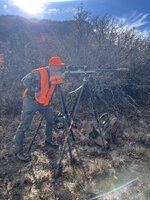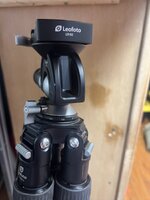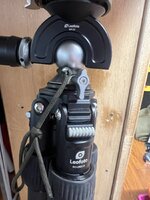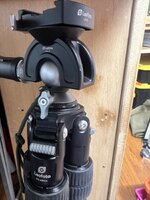This goes under the “…and hunting” category since I have no experience with NRL Hunter.
I’m a big fan of practice from the perspective of you’re walking along and see the target and have to shoot quickly. Shots where you have 6 minutes to set up are a luxury, and not any kind of real life. Shotgun hulls, or pop cans, or plates of different sizes, are nice because progress is easy to see in your hit rates. If you have mostly paper targets, put up multiples, and sharpies of different color on bullets can show up on the paper and give you an idea of different positions on the same target. Rather than printed targets, cut squares of brown cardboard without any marks - deer don’t have printing.
Wearing the daypack, rifle on a sling or in your hands, scope caps on, safety on, shooting shotgun hulls offhand gets you used to the weird feeling and logistics of getting the recoil pad into position quickly on the shoulder. I may shoot singles, or add a follow up shot either standing, sitting, or prone. Use the glove you hunt in.
The same works well sitting. Start standing with day pack on, drop quickly for a sitting shot. Again, the logistics of getting the rifle off the shoulder, popping caps off, and into position are better to work out at the range. Many well intentioned techniques and gizmos will be abandoned once the actual time penalty is seen time after time.
I hunt with an empty chamber and practice how I hunt with every shot, or I’m only practicing half of what really happens. Muscle memory cost me a really big really old buck - I practiced without needing to engage and disengage the safety each shot - when I had to scramble to get an angle at a buck running away, the safety went on, I scrambled, and a quick, but doable standing shot presented itself - squeeze..nothing…squeeze harder…nothing…look at the very reliable custom rifle for a second to realize the safety was on…look into scope just to see the old buck disappear into the trees.
Maybe take 5 shots - one standing, a second at a further target sitting, a further prone shot without a rest, a fourth over a pack, and fifth with a bipod or tripod. Even if someone always wants to use a bipod, especially a short one, in real life there might not be time, or the terrain may not make it usable. If you’re only shooting from ground that allows a bipod and rear bag, you’re accepting a big limitation. I chuckle when the nephew complains about the time to fold up the bipod and get off the ground for each shot - that time penalty is exactly what you’re accepting by using a gizmo.
Training like every shot is real, also helps the shooter develop rules of thumb and sense of time for when to range, or whatever, and when to simply take the shot. When to shoot offhand, and when quickly dropping for a seated shot is appropriate, or the only option is going straight to prone. Sitting wearing a t shirt, taking a bunch of shots, or loading them one by one is as unrealistic as humanly possible.
Measure how long different positions take to set up. Many shots are lost because the shooter has tried to use a time consuming set up and the animal didn’t stand there long enough. At what range do you need to range? Dial? How far can you connect reliably standing? Sitting? Sitting with a rest? Etc.
It ticks off the nephew when we have a 300ish yard rock and I jump out, throw a pack down and bang bang, before his bipod is leveled. I could do jumping jacks between shots and beat his first shot time. When it’s closer to 400 I know to range it, hold three fat squirrels high and bang bang. 450 up is automatically dialing range. I only developed the rules of thumb at the range figuring out what works and doesn’t work for me. I’d go as far saying it’s important to know the difference between max distances with and without a rear bag. Our teenagers and wives can smoke a goat at 400 yards without a rear bag, so if you’re crawling through sagebrush to get into position, not needing a bag is nice to know.
How many guys have practiced crawling 50’ and taking a shot? It doesn’t take long before figuring out knee pads and at least a left hand glove makes perfect sense. Practice in the knee high sage with a short bipod and you’ll be leaving it in the truck because it’s useless.
Even when I was broke, I’d go through all the gymnastics to get into position, dry fire a number of times for every live round. Especially for new shooters, dry firing should be a part of every range trip.







